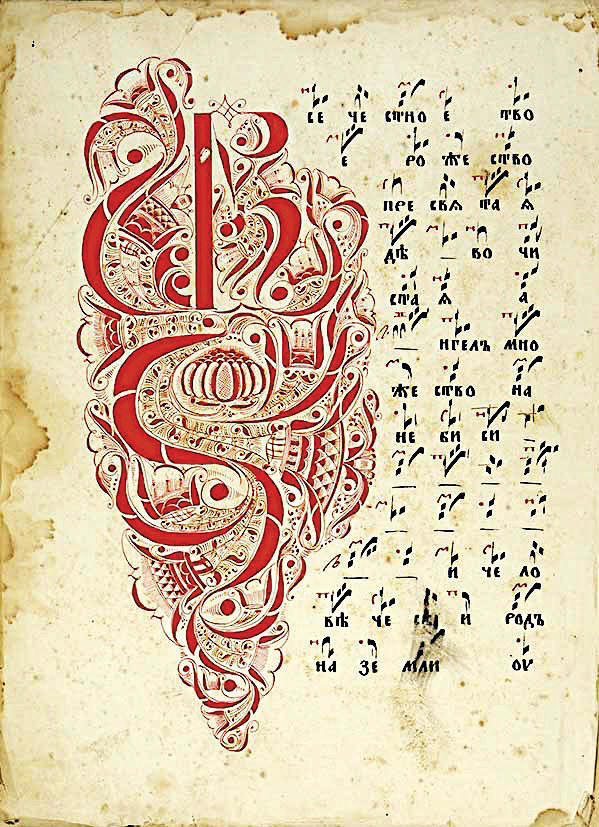 The Russian Chamber Chorus of New York (RCCNY), which for 30 years has brought
to New York audiences rarely-heard gems of the Slavic choral tradition,
celebrates the holiday season with a program embracing the unique musical spirit
of Russia and Ukraine.
The Russian Chamber Chorus of New York (RCCNY), which for 30 years has brought
to New York audiences rarely-heard gems of the Slavic choral tradition,
celebrates the holiday season with a program embracing the unique musical spirit
of Russia and Ukraine.
The first part of the concert is devoted to the development of the Russian Choral Concerto, a genre of the Russian church music. The concert opens with a set of early Russian polyphony, a form steeped in distinctly Slavic tonality that sets the stage for the concert. These works will sound quite unusual to the audience’s ears, yet together they illustrate the recognizable harmonic “language” shared by Russian music of that time.
This new polyphony evolved further in the 18th century, when Russian church singing came under the influence of the Italian school of composition and performance. One of the most distinguished creators of this new genre was the head of the Royal Cappella in St. Petersburg, Dmitry Bortnyansky (1751-1825), a Ukrainian composer, trained in Italy. As a result of this influence, by the end of that century and the beginning of the next, early polyphony disappeared and was replaced by the classical sacred concerto style. To showcase this uniquely grand, baroque style of concerto composition so favored in the courts of Russia at the time, the concert will feature two signature sacred works by Bortnyansky and one by fellow Ukrainian Maxim Berezovsky (1740-1777).
The classical sacred concerto genre reached its highest development in the 20th century in works by composers such as Rachmaninoff, Gretchaninov, Yaichkov and Alexander Yegorov, a church composer little-known in the West. All of these are represented in our program. These compositions reflect the “golden days” of Russian church music, when there were numerous church choirs with a full-bodied sound ranging from light, high boys’ voices to the lowest basso profundo.
The second half of the concert focuses on traditional and modern classics from Russia’s greatest musically influential neighbor, Ukraine. Listeners will revel in the bright, unquenchable spirit of Ukrainian folk music, found in Four Ukrainian Carols arranged by Maestro Kachanov as well as in the unique composition Two Carols by renowned Ukrainian composer Lesia Dychko. This half of the concert will also feature the beloved “Natalia's Aria” from the classical Ukrainian opera Natalka Poltavka by Mykola Lysenko, to be performed by Ukrainian-American soprano Hanna Golodinskii. The music in Lysenko’s famed 1889 setting of this much-adapted story of love and longing is based in the Ukrainian folk songs that populated the original version of the play.
The very special flavor of Slavic sound will be further developed with the world premiere of a contemporary composition, Christmas Song, by the New York composer Mikhail Zeiger. The concert will conclude on a wonderfully festive note with the “Russian Trio,” who will perform on traditional musical instruments (domra, bayan, and bass-balalaika). Under the direction of Tamara Volskaya, the trio will play a Fantasy on Themes of Ukrainian Folk Songs by contemporary Russian composer Kholminov, and will accompany the chorus for a joyous arrangement of the Ukrainian favorite Shchedryk (commonly referred to as Carol of the Bells).
By creating a Slavic musical atmosphere that celebrates the splendor of two wonderfully distinct cultural and musical traditions, the concert offers a resonant invocation for peace.
Two performances in Manhattan: Friday, January 8, 2016, 7:30 PM, at The Brick Presbyterian Church, 1140 Park Avenue at 91st Street; and Sunday, January 10, 2016, 4:00 PM, at Holy Trinity Lutheran Church, Central Park West at West 65th Street. Tickets are $25 at the door, $20 for students and seniors 65+. For additional information, visit www.rccny.org or call (212) 928-1402.
Members of the Russian Chamber Chorus of New York contributed to this article.
